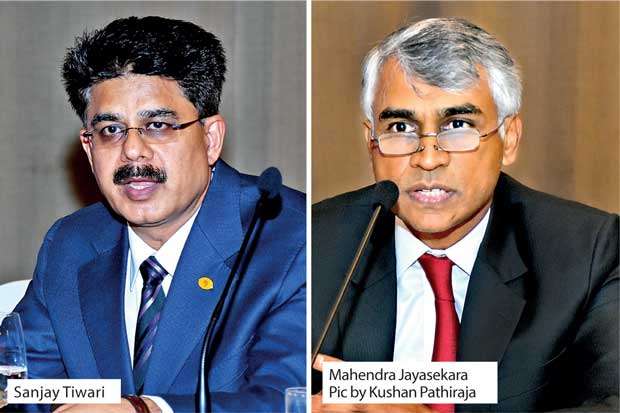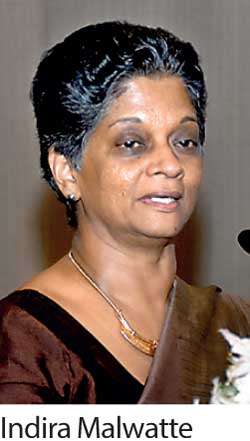Reply To:
Name - Reply Comment

By Nishel Fernando
The apex body of Sri Lanka’s ceramic and glass industry recently urged the government to re-evaluate its trade liberalisation agenda, tax structure and energy prices to boost exports and to control the low grade ceramic products being dumped into the country.
Addressing Sri Lanka Ceramic and Glass Council (SLCGC) Annual General Meeting (AGM) in Colombo, last week, its President and Piramal Glass Ceylon PC CEO, Sanjay Tiwari highlighted that lower export margins due to the withdrawal of tax concessions and higher energy prices that don’t reflect world market prices are disincentivizing local firms to export. Responding to a query by Mirror Business on the impact of the tax concession withdrawal for exporters, Tiwari said: “It is one of the biggest barriers. There has to be some incentive for exporters. We are in competition with giants like China and India. Our margins on exports are lower than domestic ones. Hence the concessionary tax was the only benefit. The government’s decision will not only bring down exports but will discourage manufacturers thinking of exports.”
According to the new Inland Revenue Act, those who get over 80 percent of their revenue from exports will only qualify for 14 percent concessionary income tax, while others are liable for 28 percent income tax. Speaking of energy costs, which constitute to almost 40 percent of the production costs in glass and ceramic industries, Tiwari noted that the furnace oil price in comparison to other regional countries should be in the range of Rs.85 per litre.
However, he noted that the price of furnace oil has been increased arbitrary to Rs. 92 from Rs. 80 per litre. “The government’ says CPC has to make some profits to recover its losses,” he said.
The SLCGC pleaded the Export Development Board (EDB) to intervene to introduce global criteria of fixing the fuel prices based on a formula that is linked to world crude oil prices and to bring in more transparency and a level-playing field in the industry.
The SLCGC is also planning to push the government to remove the Port and Airport Development Levy (PAL) on the importation of LPG mainly by exporters, as the lobbying of individual firms has become ineffective. “This will help the two suppliers to offer reduced prices to the industry. We would also request the EDB too to intervene and support us in the matter,” Tiwari said.
Due to high energy costs, SLCGC is also contemplating to explore the possibility of using coal for gasification to maximise solar power usage. Meanwhile, SLCGC, past President and Lanka Tiles Managing Director Mahendra Jayasekara expressed concerns over the government’s trade liberalisation agenda, which includes the removal of para-tariffs and entering into Free Trade Agreements (FTAs).
He pointed out that Sri Lanka could get flooded with low grade ceramic and glass products. Jayasekara stressed that the SLCGC does not oppose entering into FTAs since the government doesn’t have the capacity to implement FTAs and therefore the FTA benefits wouldn’t be reciprocal.
He also called the government to reinstate the cess on sanitaryware imports to curtail cheap imports coming into the country, while noting that despite anti dumping laws being enacted over six months ago, the government has failed to put a mechanism in place to implement the law. “We all know that there is importation of cheap tiles, sanitaryware, glass and tableware from China, India, Indonesia and other Asian suppliers, whcih still remain a significant threat to the local industry,” Jayasekera emphasized.
He revealed that almost 60 percent of the local demand for floor and roof tiles is serviced through imports into the country.
He pointed out that due to the current restrictions and limitation on clay and silica mining, the industry is unable to invest in capacity expansion, and called the authorities to simplify the existing system to obtain raw material and resolve transport related issues.
SLCGC is planning to utilise large deposits of red clay and sand available in Yann Oya area for the ceramic and red clay industry.
Despite the challenges, Tiwari noted that top firms in the ceramic and glass industry have increased their export ratio. According to him, contribution of exports to the revenue of Noritake Lanka Porcelain, Dankotuwa Porcelain, Piramal Glass, Lanka Tiles and Midaya Ceramic stands at 75 percent, 55 percent, 40 percent, 15 percent and 80 percent respectively. Tiwari revealed that the ceramic and glass industry is eyeing niche markets in Canada, USA and Australia to offer personalised products to boost export earnings.
He also noted that firms are investing around 3-5 percent of their turnover in Research and Development (R&D) on average to support the growth of the industry, which grows around 5-6 percent annually. SLCGC has taken several measures to raise the standards of the industry, including a joint project with the Industrial Technology Institution (ITI) and Sri Lanka Standards Institution (SLSI) to revise and implement the 44-year old red clay roof tile standard and SLS certification programme.
In addition, the SLCGC has also partnered with Uva Wellassa and Sri Jayawardanapura Universities to develop methods to recycle CRT glass waste in ceramic and red clay industries and several other R&D activities.
EDB chief calls to increase contribution to 1% of merchandise exports
 Export Development Board (EDB) Chairperson and Chief Executive Officer Indira Malwatte urged the Sri Lanka Ceramic and Glass Council (SLCGC) to set a target to double the exports from 0.5 percent to 1 percent of merchandise exports within a period five years.
Export Development Board (EDB) Chairperson and Chief Executive Officer Indira Malwatte urged the Sri Lanka Ceramic and Glass Council (SLCGC) to set a target to double the exports from 0.5 percent to 1 percent of merchandise exports within a period five years.
She requested SLCGC members to work on target to double the industry’s composition of merchandise exports to 1 percent in five years, while focusing on advanced products such as dental implants, paints, medicinal pills and tablets, food colouring etc.
She pointed out that the government has set a target to double the exports by 2023 to US $30.7 billion, and noted that Sri Lanka is on route to achieve the US $17.4 billion export target this year as 60 percent of it has been already achieved by end of August.
Malwatte, who graced the SLCGC Annual General Meeting as the guest of honour, stressed that differentiating products utilising technology is crucial for Sri Lankan exporters in order to become competitive in global markets.
She also urged the firms to reap the benefits of EDB offered programmes , particularly the Market Access programme, which provides grants to exporters to strengthen their market presence, to invest in R&D and to receive necessary international certification for their products. Responding to the lack of a mechanism to implement anti-dumping laws, Malwatte said that the different State agencies are working on setting up a structure to implement the anti-dumping laws and in the meantime the Department of Commerce will carry out antidumping and countervailing duty investigations based on complaints received from the private sector.
She noted that EDB has initiated several programmes targeting the ceramic sector such as a project to develop new eco-friendly red clay roof tiles for international markets and a product development programne for body preparation of red clay products.